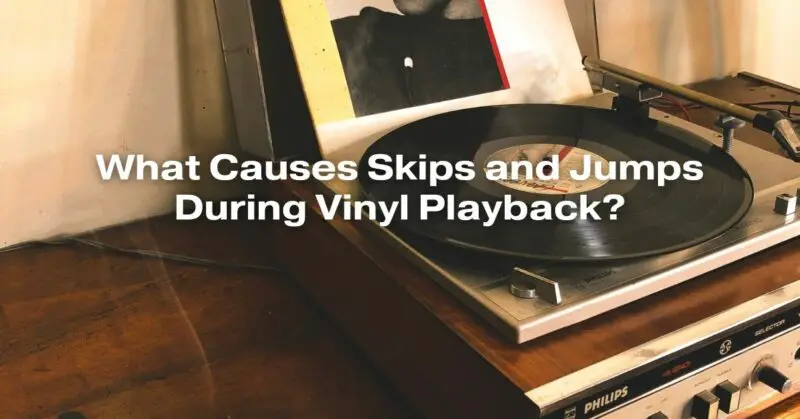Vinyl records have made a remarkable resurgence in recent years, appealing to audiophiles and music enthusiasts alike. The warm, rich sound and tactile experience of handling records provide a unique charm. However, vinyl playback is not without its challenges. One of the most frustrating issues that can occur during vinyl playback is skips and jumps. This article explores the various causes behind these disruptions and offers valuable solutions for a seamless listening experience.
I. Dust and Debris
Dust and debris on the surface of a vinyl record are major culprits for skips and jumps. Even microscopic particles can interfere with the needle’s smooth movement across the grooves, causing it to skip or jump to a different section of the track.
Solution: Regularly clean your records using a carbon fiber brush or a microfiber cloth before playing. Invest in a good quality record cleaning kit to maintain the cleanliness of your vinyl collection.
II. Worn-out or Misaligned Needles
Over time, the needle (stylus) of a turntable cartridge can wear out, becoming dull or damaged. Additionally, if the needle is misaligned, it may not sit properly in the grooves, leading to tracking issues.
Solution: Replace the stylus periodically, as recommended by the manufacturer. Ensure proper alignment of the cartridge and stylus, as per the turntable’s user manual, to avoid unnecessary wear and tear.
III. Uneven Playing Surface
An uneven or unstable surface on which the turntable is placed can result in vibrations that cause skips and jumps. This can be especially problematic if the surface is susceptible to movement, such as a flimsy table or speaker.
Solution: Place your turntable on a stable, level surface. Consider investing in isolation pads or a turntable stand designed to reduce vibrations and enhance stability.
IV. Warped Records
Vinyl records are susceptible to warping due to exposure to heat, humidity, or improper storage. Warped records have uneven surfaces, making it difficult for the needle to maintain consistent contact with the grooves.
Solution: Store your records vertically in a cool, dry place away from direct sunlight. Avoid placing heavy objects on top of them. If a record is slightly warped, some enthusiasts use specialized vinyl record flattening machines to restore its shape.
V. Tonearm Issues
Issues with the tonearm, such as incorrect tracking force or an imbalanced tonearm, can lead to skips and jumps. If the tracking force is too light, the needle may not stay in the grooves, while excessive force can cause unnecessary wear and tear.
Solution: Calibrate your tonearm according to the specifications provided by the cartridge manufacturer. Use a digital stylus gauge to ensure accurate tracking force. If you are unsure about the setup, consider consulting a professional technician.
VI. Pressing Defects
Occasionally, skips and jumps can be attributed to manufacturing defects in the vinyl record itself. These defects may include off-center pressings, irregular grooves, or debris embedded in the vinyl during production.
Solution: Inspect new records carefully before playing. If you notice any visible defects, consider returning the record to the retailer for a replacement.
Conclusion
Vinyl playback, while nostalgic and sonically rewarding, demands attention to detail and proper maintenance to ensure a flawless experience. By addressing common issues such as dust, worn-out needles, uneven surfaces, warped records, tonearm problems, and pressing defects, enthusiasts can enjoy their vinyl collections without the frustration of skips and jumps. Regular cleaning, correct setup, and careful handling are essential practices that can significantly enhance the longevity and quality of vinyl records, allowing music lovers to savor the true analog magic of vinyl playback.


